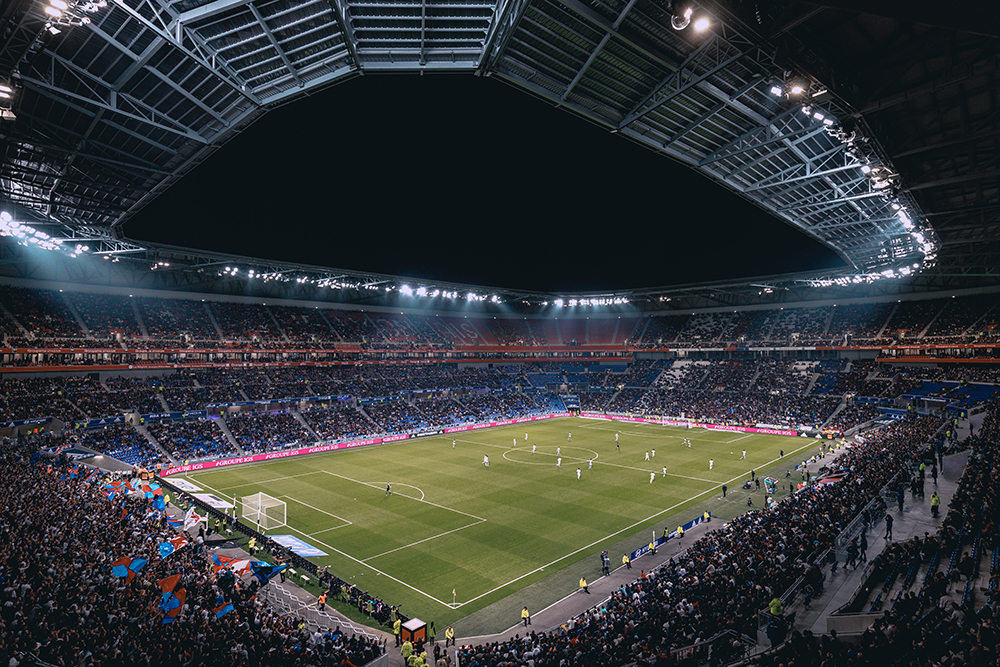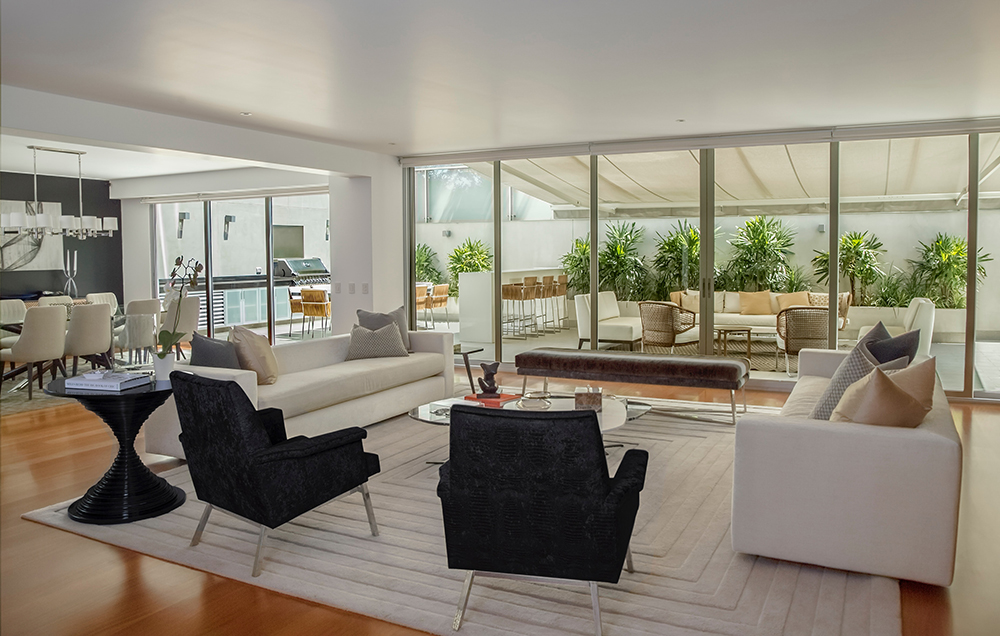If you have an AMD graphics card made in the last couple of years, like the AMD Radeon VII or AMD Radeon RX 5700 and you dont have a FreeSync gaming monitor, its time to upgrade. Once you experience the smoothness and responsiveness of a variable refresh rate monitor, theres just no going back.Gamers with AMD graphics cards in their gaming PCs owe it to themselves to upgrade to a FreeSync gaming displaythe difference is truly striking. These are our picks for the best FreeSync monitor at every price range, size, and resolution.TL;DR These are the Best FreeSync Gaming Monitors:
1. Gigabyte Aorus FI27Q Tactical Gaming Display
Best FreeSync Gaming Monitor
Screen size: 27″ Aspect ratio: 16:9 Resolution: 2,560 x 1,440 Panel type: IPS FreeSync Premium, G-Sync Compatible Brightness: 350cd/m2 Refresh rate: 165Hz Response time: 4ms Viewing angle: 178(H)/178(V) Contrast ratio: 1,000:1 Color support: 95% DCI-P3, 100% sRGB Inputs: 2 x HDMI 2.0, 1 x DisplayPort 1.2, 1 x 3.5mm audio Weight: 17.64 pounds Size: 24.2″ x 14.6″ x 9.33″
Gigabyte has kept up its game with this series of monitors. The Gigabyte Aorus FI27Q improves upon the already excellent Aorus AD27QD (read our review). With it, you’ll get a super-smooth 165Hz refresh rate to go alongside a crisp 1440p display. Better still, the monitor uses an IPS panel, so you’re not sacrificing viewing angles to get that refresh rate. It even maintains a speedy 1ms response time.Naturally, this monitor supports FreeSync, but it also meets the FreeSync Premium specification, so it can include low framerate compensation when your system struggles to keep up with demanding titles. And, if you later decide to switch to an Nvidia graphics card, this monitor is G-Sync Compatible to top it all off.
2. ViewSonic XG2405
Best Budget FreeSync Gaming Monitor
Screen size: 23.8″ Aspect ratio: 16:9 Resolution: 1,920 x 1,080 Panel type: IPS FreeSync Premium Brightness: 250cd/m2 Refresh rate: 144Hz Response time: 1ms Viewing angle: 178(H)/178(V) Contrast ratio: 1,000:1 Color support: 16.7M, 8-bit (6-bit+FRC) Inputs: 2 x HDMI 1.4, 1 x DisplayPort 1.2 Weight: 14.77 pounds Size: 21.26″ x 20.51″ x 9.41″
You can get up to gaming speeds without going overboard on price with the ViewSonic XG2405. This gaming monitor serves up a 1080p picture that can run at up to 144Hz, so you’ll be able to enjoy smooth visuals that can give you a competitive edge. With a response time of just 1 millisecond, you won’t have to deal with smeared visuals or ghosting.Most surprising at this price point is that you’re getting a display with an IPS panel offering wide viewing angles. It’s even built onto a highly adjustable stand, so you can get the angle and height that’s right for your gaming comfort.
3. Viotek GFI27QXA
Best 4K FreeSync Gaming Monitor
Screen size: 27″ Aspect ratio: 16:9 Resolution: 3,840 x 2,160 Panel type: IPS FreeSync Brightness: 350cd/m2 Refresh Rate: 144Hz Response time: 5ms (GTG) / 1ms (OD) Viewing angle: 178(H)/178(V) Contrast ratio: 1,000:1 Color support: 8-bit, 16.7M colors, 110% sRGB Inputs: 2 x HDMI 2.0, 2 x DisplayPort 1.4 x Weight: 13.45 pounds Size: 24.37″ x 20.25″ x 9.07″
Hitting a stable framerate while gaming at 4K can be difficult for even powerful gaming PCs, so it can come in handy to have support for FreeSync. The Viotek GFI27QXA is a fairly affordable meeting point for both technologies, and it can even give you some extra performance with a refresh rate up to 144Hz.This monitor sticks to the basics in many ways, but it offers incredibly crisp visuals by packing in a 4K panel into just 27 inches. If you want to use this display for FreeSync, you’ll need to connect over DisplayPort, and your refresh rate will be limited to 120Hz. But, if you want to abandon FreeSync and max out the refresh rate from time to time, you can simultaneously use two DisplayPort connections.
4. Asus ROG Strix XG279Q
Best 1440p FreeSync Monitor
Screen size: 27″ Aspect ratio: 16:9 Resolution: 2,560 x 1,440 Panel type: IPS Freesync HDR Compatibility: DisplayHDR 400 Brightness: 350cd/m2 Refresh rate: 170Hz Response time: 1ms Viewing angle: 178(H)/178(V) Contrast ratio: 1,000:1 Color support: 125% sRGB Inputs: 2 x HDMI 2.0, 1 x DisplayPort 1.2 Weight: 15.43 pounds Size: 24.1″ x 16.2″ x 10.6″
Sure, 1440p at 144Hz may be the sweet spot, but why not push it a little further with the 170Hz refresh rate of the Asus ROG Strix XG279Q. You’ll be able to enjoy crisp game visuals smoothly and without stutter. This monitor also offers up a FreeSync Premium and G-Sync Compatible experience, so you don’t have to stuttering or screen tearing while you game.The display uses an IPS panel that’ll deliver wide viewing angles and excellent color accuracy. That’s only further improved with HDR support, as the monitor meets the DisplayHDR 400 specification. So, if you’re looking for a killer 1440p gaming monitor with FreeSync, you need look no further.
5. Alienware 27 Gaming Monitor
Best 1080p FreeSync Monitor
Screen size: 27″ Aspect ratio: 16:9 Resolution: 1,920 x 1,080 Panel type: IPS FreeSync Brightness: 350cd/m2 Refresh rate: 240Hz Response time: 1ms Viewing angle: 178(H)/178V) Contrast ratio: 1,000:1 Color support: 1.67M Inputs: 2 x HDMI 2.0, 1 x DisplayPort 1.2 Weight: 28.24 pounds Size: 24.12″ x 22.02 x 8.5″
Here’s where we would normally feature one of the many models of 25-inch Full HD 240Hz gaming monitors you’ve probably seen a dozen times over. But it seemed much more fitting that the Alienware 27 Gaming Monitor (AW2720HF) should be our best pick for a FreeSync 1080p display. It’s still a gaming monitor tuned Esports with a 240Hz refresh rate, but it comes with a larger 27-inch panel.What’s more, it’s an IPS panel so it produces great colors and very good viewing angles over the usual TN panels that 240Hz gaming monitors use. Don’t think this pretty Esports monitor slow you down either, it’s has a quick 1ms response time to keep up with the best competitive displays.
6. Samsung Odyssey G7
Best Curved FreeSync Gaming Monitor
Screen size: 27″ 1000R Aspect ratio: 16:9 Resolution: 2,560 x 1,440 Panel type: VA QLED FreeSync Premium Pro Brightness: 600cd/m2 Refresh rate: 240Hz Response time: 1ms Viewing angle: 178(H)/178(V) Contrast ratio: 2,500:1 Color support: 1.07B, 10-bit (8-bit + FRC) 125% sRGB Inputs: 1 x HDMI 2.0, 2 x DisplayPort 1.4 Weight: 15.87 pounds Size: 24.19″ x 17.95″ x 12.04″
Curved gaming monitors try to immerse you by bending the display around your field of vision, and the Samsung Odyssey G7 goes further than many of the monitors you’ve likely seen before. That’s thanks to a tight curvature with a 1000R radius. Of course, that wouldn’t be worth much if the display panel wasn’t also a winner. Fortunately, the Odyssey G7 delivers a QLED panel with 10-bit color and a 600-nit peak brightness that can bring some solid HDR performance.Your games will look especially great on this monitor with the combination of colorful and vivid visuals matched with a 1440p resolution and high contrast ratio. And, let’s not forget that this monitor can cruise at a 240Hz refresh rate with FreeSync Premium Pro to smooth it all out.
7. LG UltraGear 34GN850-B
Best Ultra Wide FreeSync Monitor
Screen size: 34″ 1800R Aspect ratio: 21:9 Resolution: 3,440 x 1,440 Panel type: Nano IPS FreeSync, G-Sync Compatible HDR compatibility: HDR10, DisplayHDR 400 Brightness: 440cd/m2 Refresh rate: 144Hz Response time: 3.5ms Viewing angle: 178(H)/178(V) Contrast ratio: 1,000:1 Color support: 1.07B, 10-bit (8-bit+FRC) Inputs: 2 x HDMI 2.0, 1 x DisplayPort 1.4 Weight: 16.76 pounds Size: 32.25″ x 18.27″ x 12.29″
Sometimes bigger is better, and that feels especially true for ultra-wide monitors. The LG UltraGear 34GN8550-B comes in with a 34-inch display in a 21:9 aspect ratio to take over your desk with a massive, cinema-like setup. The display itself is slightly curved, so it’ll wrap around your vision and put you right into the middle of the action.The display itself is a 3,440 x 1,440 panel that can run at a speedy 144Hz refresh rate, so you’ll be gaming smooth. And, it has a high enough brightness level and wide color gamut to earn it DisplayHDR 400 certification, in case you want to dip your toes into HDR gaming and cinema.
8. Asus TUF Gaming VG27AQ
Best G-Sync Compatible Gaming Monitor
Screen size: 27″ Aspect ratio: 16:9 Resolution: 2,560 x 1,440 Panel type: IPS FreeSync, G-Sync Compatible HDR Compatibility: HDR10 Brightness: 350cd/m2 Refresh Rate: 155Hz Response time: 4ms Viewing angle: 178(H)/178(V) Contrast ratio: 1,000:1 Color support: 8-bit Inputs: 2 x HDMI 2.0, 1 x DisplayPort 1.2 Weight: 12.79 pounds Size: 24.4″ x 14.8″ x 8.31″
If you find yourself constantly jumping between Nvidia- and AMD-powered systems like I do, you need a G-Sync compatible FreeSync gaming monitor. The Asus TUF Gaming VG27AQ is one latest and greatest of this growing display class that lets you take full advantage of both G-Sync and FreeSync to give you a variable refresh rate no matter which platform your playing on.On top of being able to enjoy completely smooth gameplay on the Xbox One and any gaming PC, this monitor serves up a scrumptious QHD picture. You’ll also be able to enjoy high-frame ratesif your graphics card can keep up that isof up to 165Hz. Although the TUF Gaming VG27AQ uses an IPS panel, it’s pretty responsive at 4ms and you get great colors to boot, not to mention HDR 10 support.
9. Samsung 65″ Class Q90T Smart QLED 4K TV
Best FreeSync Gaming Television
Screen size: 64.5″ Resolution: 4K Panel Type: Full-Array QLED HDR Compatibility: HDR10, HDR10+, HLG, Quantum HDR 2000 Peak Brightness: 1,500cd/m2 Local Dimming Zones: 96 Refresh Rate: 120Hz Inputs: 1 x HDMI 2.1, 3 x HDMI 2.0, 1 x RF
Sometimes a monitor just isn’t going to cut it, especially if you want to lounge back on a couch at some distance from your display without missing all the little details from your games. Fortunately, you don’t have to miss out on FreeSync just because you want a big display. Samsung’s Q90T QLED 4K TV not only offers up a proper FreeSync experience, but it also supports a 120Hz refresh rate and stunning HDR thanks to its 1,500-nit peak brightness and numerous local dimming zones.This is definitely a great pick if you need something that can perform double-duty for both gaming and media. You can even leave your headphones and desk speakers behind, as the Q90T has built-in speakers that’ll probably blow away the speakers on any traditional monitor you’ve ever used.
What to look for in a FreeSync gaming monitor
FreeSync is AMDs branding for its variable refresh rate (VRR) monitor technology. Its built on top of the open VESA Adaptive-Sync protocol as part of the DisplayPort 1.2a spec. If you have a FreeSync monitor, youll get variable refresh rates with just about any modern AMD graphics card.If youre running an Nvidia graphics card or using another video source (like a game console via an HDMI input), a FreeSync monitor will act just like a normal monitor.
What is VRR?
Basically, a standard monitor is locked to a single refresh ratethats the number of times per second that it changes the color and brightness of the pixels on the screen. Your graphics card draws a frame and then waits until the monitors next refresh to display it.This has the effect of making your game jump frame rate between even multiples of the displays refresh: with a 60Hz monitor, your game will run at 60fps, 30fps, 20fps, 15fps, or 12fps, for example. Disabling vsync will also allow your graphics card to run as fast as possible on any monitor, but it produces an ugly visual artifact called tearing, where the monitor displays partially-drawn frames on top of the previous frame.
With VRR technology, the monitor refreshes whenever the graphics card is done drawing the next frame.
With VRR technology (G-Sync or FreeSync), the monitor refreshes whenever the graphics card is done drawing the next frame. So your monitor might max out at 60Hz and your game at 60fps, but if your game is running at 52fps the monitor will refresh at 52Hz, drawing the frame immediately instead of waiting for the next 60Hz cycle. So youll see the frame rate your graphics card is capable of, not an unnecessary downgrade to 30fps. This also eliminates screen tearing caused by the GPU sending multiple frames to the monitor when it’s still rendering a previous frame.There are two VRR technologies gamers should know about: G-Sync and FreeSync. G-Sync is Nvidia proprietary technology and only works with Nvidia graphics cards. FreeSync is AMDs brand for a VRR technology and only works with AMD GPUs. G-Sync requires extra hardware in the monitor, driving monitors costs up but maintains consistently high quality. FreeSync has no licensing fee and requires no proprietary hardware, and thus monitors are typically cheaper, but quality control is a little less consistent in our opinion.
Kevin Lee is IGN’s Hardware and Roundups Editor. Follow him on Twitter @baggingspamMark Knapp is a regular contributor to IGN and an irregular Tweeter on Twitter @Techn0Mark
Home>>Politic>>FreeSync monitors are the must-have upgrade for the Radeon faithful. Here are our picks for the best in every size and resolution.

Politic






